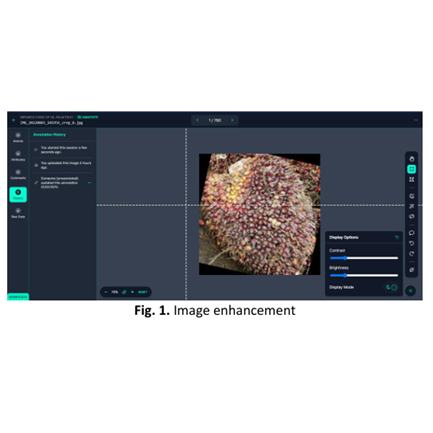Computer Vision and Artificial Intelligence (AI)-Based Ripeness Classification of Oil Palm Fruits in Oil Palm Plantations
DOI:
https://doi.org/10.37934/aaij.2.1.4458Keywords:
Oil palm, image classification, computer visionAbstract
Palm oil is one of the most important export products, and Malaysia is the world’s second-largest exporter of palm oil. Before the invention of technology, the ripeness of the oil palm fruit bunches was assessed through a traditional method involving personnel with considerable expertise in such identification processes. However, it was very time-consuming and was accompanied by human error that resulted in poor decision-making in the harvesting, thereby cutting down the yields. These challenges are solved in this research through the incorporation of a Convolutional Neural Network (CNN) model, which is in the deep learning (DL) domain of artificial intelligence (AI). The main goal of this research is to establish an AI-based system with the help of Google Teachable Machine (GTM) to classify the ripeness of the oil palm fruit bunches. Data for this research was obtained from Google Images and samples during a site visit in Negeri Sembilan, Malaysia. Posterior performance measures were obtained, and an evaluation was made on the pre-trained model after model training by measuring the confusion matrix and accuracy, as well as accuracy per epoch and the loss per epoch. Before the images are fed to the modelling process, they undergo preprocessing for image enhancement, resizing, and annotation. This research confirmed that GTM could classify the ripeness stage with an overall accuracy of 98%. This research could help shorten the harvesting period and increase the volume of the oil palm fruit bunches produced. It is also intricately linked to the Sustainable Development Goals (SDGs), specifically SDG 12: Responsible Consumption and Production, allowing for mainly proper identification of ripeness, thus enabling less wastage, optimisation of resource use, and support of sustainable agriculture.











